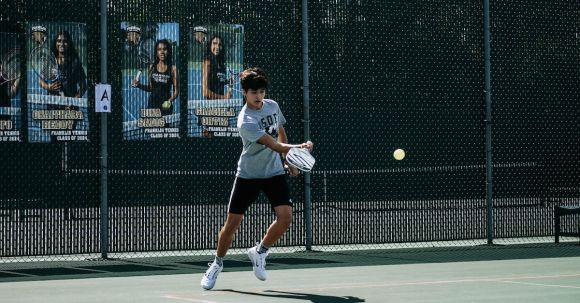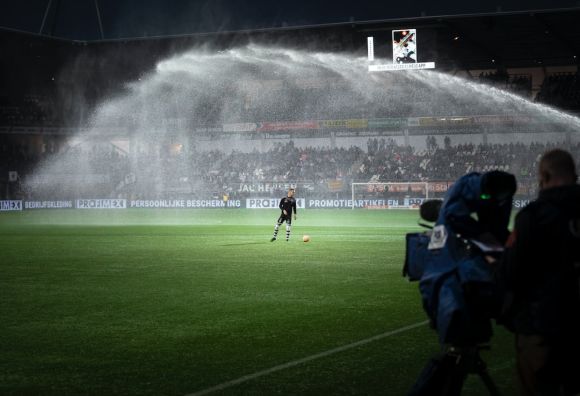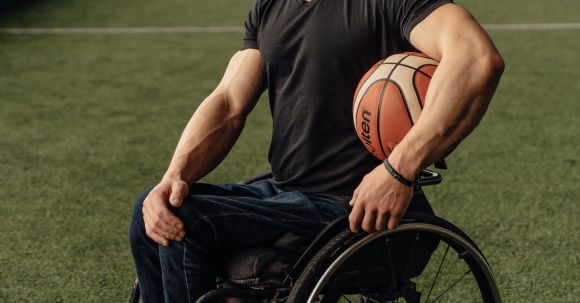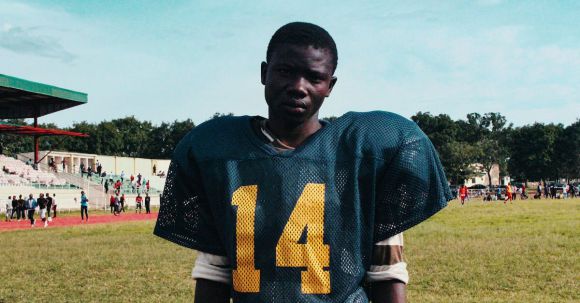As an athlete, you know that to excel in your sport, you need to be in peak physical condition. While general fitness training is important, incorporating sports-specific workouts into your training routine can take your performance to the next level. By tailoring your workouts to the specific demands of your sport, you can enhance your strength, speed, agility, and overall athletic ability. Here are some tips to help you improve your game with sports-specific workouts.
Sports-specific training
As an athlete, you are constantly looking for ways to improve your performance and take your game to the next level. One highly effective method is incorporating sports-specific workouts into your training regimen. By focusing on exercises and drills that mimic the movements and demands of your particular sport, you can enhance your athletic ability in a targeted and efficient manner.
Why Sports-specific Workouts Matter
Sports-specific workouts are designed to replicate the specific movements, skills, and physical demands of your sport. By tailoring your training to the unique requirements of your chosen activity, you can optimize your performance and minimize the risk of injuries. These workouts help improve your agility, speed, power, endurance, and overall athleticism, giving you a competitive edge on the field, court, or track.Enhancing Agility and Quickness
Agility and quickness are essential in many sports, such as basketball, soccer, and tennis. Sports-specific workouts can help improve these attributes by incorporating drills that focus on quick changes of direction, reaction time, and coordination. Agility ladder drills, cone drills, and lateral shuffle exercises are just a few examples of exercises that can enhance your agility and quickness.Boosting Speed and Power
Speed and power are crucial in sports like sprinting, football, and basketball. Sports-specific workouts can help you develop explosive speed and power through exercises such as sprints, plyometrics, and Olympic lifts. These exercises train your muscles to generate maximum force and explosiveness, allowing you to accelerate faster, jump higher, and overpower opponents.Building Endurance and Stamina
Endurance and stamina are vital for sports that require prolonged physical exertion, such as long-distance running, cycling, or swimming. Sports-specific workouts can improve your endurance by incorporating high-intensity interval training (HIIT) sessions and long-distance runs. These workouts push your cardiovascular system to its limits, improving your ability to sustain effort over extended periods.Improving Sport-specific Skills
In addition to physical conditioning, sports-specific workouts also focus on developing specific skills required for your sport. For example, a basketball player may incorporate shooting drills and dribbling exercises into their training routine, while a soccer player may work on passing accuracy and ball control. By regularly practicing these sport-specific skills, you can refine your technique and enhance your performance during games or competitions.Preventing Injuries
Sports-specific workouts not only improve your athletic ability but also help prevent injuries. By targeting the muscles and movements used in your sport, you can strengthen the areas that are most prone to injury. For instance, a runner may include exercises that strengthen the hips and knees to reduce the risk of common running injuries like IT band syndrome or shin splints. By proactively addressing potential weaknesses or imbalances in your body, you can minimize the likelihood of getting sidelined by injuries. In conclusion, sports-specific workouts are a valuable tool for athletes looking to elevate their performance. By tailoring your training to the specific demands of your sport, you can enhance your agility, speed, power, endurance, and sport-specific skills. Moreover, these workouts help reduce the risk of injuries, enabling you to stay in the game and continue pushing your limits. So, whether you are a basketball player, a runner, or a soccer player, incorporating sports-specific workouts into your training routine can transform your athletic ability and take you to new heights.
Every athlete knows that to excel in their chosen sport, they need to train consistently and effectively. But what if there was a way to take your training to the next level? That's where sports-specific training comes in. By tailoring your workouts to mimic the movements and demands of your sport, you can enhance your performance and take your game to new heights. In this article, we'll explore the benefits of sports-specific training and how you can incorporate it into your routine.
Understanding Sports-specific Training
Sports-specific training is a targeted approach to training that focuses on the specific skills and movements required for a particular sport. Instead of relying solely on general fitness exercises, sports-specific training hones in on the specific demands of your sport, helping you to develop the strength, speed, agility, and endurance needed to excel.Benefits of Sports-specific Training
1. Improved Performance: By training in a way that closely mimics the movements and demands of your sport, you can improve your performance on the field or court. Not only will you become stronger and faster, but you'll also develop the specific skills and techniques necessary for success. 2. Injury Prevention: One major advantage of sports-specific training is its ability to help prevent injuries. By targeting the muscles and movements used in your sport, you can strengthen them and reduce the risk of injury. Additionally, sports-specific training can improve your overall body awareness, allowing you to move more efficiently and reduce the strain on your joints. 3. Enhanced Mental Focus: Sports-specific training not only benefits your physical performance but also your mental game. By practicing the specific skills and techniques required for your sport, you'll develop a greater level of mental focus and concentration. This can help you make split-second decisions on the field and react quickly to changing game situations.Incorporating Sports-specific Training into Your Routine
1. Identify the Demands of Your Sport: The first step in incorporating sports-specific training into your routine is to identify the specific demands of your sport. What are the key movements, skills, and physical attributes required? Once you have a clear understanding of these, you can tailor your training accordingly. 2. Design a Targeted Workout Plan: Based on the demands of your sport, design a targeted workout plan that focuses on the specific skills and movements you need to improve. This may include exercises that mimic the movements of your sport, such as agility drills, plyometrics, and sport-specific strength exercises. 3. Seek Professional Guidance: If you're new to sports-specific training or unsure of where to start, it can be beneficial to seek guidance from a sports performance coach or trainer. They can help you design a personalized training plan and provide expert guidance on technique and form. 4. Incorporate Variety into Your Training: To continue challenging your body and prevent plateaus, it's important to incorporate variety into your training routine. This can include changing up exercises, adding new drills, or increasing the intensity or duration of your workouts. 5. Listen to Your Body: While sports-specific training can be incredibly beneficial, it's important to listen to your body and avoid overtraining. Pay attention to any signs of fatigue or injury and adjust your training accordingly. Rest and recovery are just as important as the training itself.Conclusion: Elevate Your Game with Sports-specific Training
If you're looking to take your game to the next level, sports-specific training is the key. By tailoring your workouts to mimic the movements and demands of your sport, you can enhance your performance, prevent injuries, and elevate your mental focus. So, identify the demands of your sport, design a targeted workout plan, seek professional guidance if needed, and incorporate variety into your training routine. With sports-specific training, you'll transform your game and reach new heights in your athletic journey.
To excel in any sport, it is crucial to have a training program that is tailored specifically to the demands of that sport. Generic workouts may improve overall fitness, but they will not give you the edge you need to dominate your competition. Sports-specific workouts are designed to target the specific muscles and skills required for your sport, helping you to improve your performance and reach your full potential. In this article, we will explore the benefits of sports-specific workouts and provide some tips on how to incorporate them into your training routine.
Understanding the Importance of Sports-specific Workouts
Sports-specific workouts are designed with the specific movements and requirements of your sport in mind. They focus on improving the skills, strength, endurance, and agility needed for optimal performance. By targeting the specific muscles used in your sport, these workouts can help you develop power, speed, and precision, giving you a competitive advantage.Benefits of Sports-specific Workouts
1. Improved Performance: Sports-specific workouts target the muscles and skills needed for your sport, allowing you to develop the specific attributes required for success. Whether it's explosive power for sprinting, core stability for golf swings, or endurance for long-distance running, these workouts can help you improve your performance in your chosen sport. 2. Injury Prevention: Sports-specific workouts not only improve performance but also help prevent injuries. By strengthening the muscles used in your sport and improving flexibility and mobility, these workouts can reduce the risk of common sports-related injuries. This is particularly important for athletes who engage in high-impact sports or repetitive movements. 3. Mental Focus: Sports-specific workouts not only train your body but also help improve your mental focus. By simulating the movements and challenges of your sport, these workouts can help you develop the mental toughness and concentration needed to perform at your best under pressure.Incorporating Sports-specific Workouts into Your Training Routine
1. Identify the Specific Demands of Your Sport: Start by understanding the specific movements, skills, and physical attributes required for your sport. This will help you design a training program that targets these specific areas. 2. Consult a Professional: If you are new to sports-specific workouts or unsure where to start, it is always a good idea to consult with a professional trainer or coach. They can help assess your current fitness level, identify areas for improvement, and design a personalized training program tailored to your sport. 3. Focus on Strength and Conditioning: Sports-specific workouts often involve a combination of strength training and conditioning exercises. Incorporate exercises that target the muscles used in your sport, such as squats for soccer players or shoulder presses for swimmers. Additionally, include exercises that improve cardiovascular endurance and agility. 4. Include Skill-specific Drills: To further enhance your performance, incorporate skill-specific drills into your training routine. These drills should mimic the movements and challenges of your sport. For example, basketball players can practice shooting and dribbling drills, while tennis players can focus on footwork and stroke technique. 5. Periodize Your Training: To avoid plateauing and ensure continuous improvement, it is important to periodize your training. This involves dividing your training program into specific phases, each with different goals and intensities. For example, you may have a strength-building phase followed by a power and speed phase. By incorporating sports-specific workouts into your training routine, you can take your performance to the next level. Remember to consult with professionals, focus on specific demands, and include a variety of exercises to target both strength and skill development. With dedication and consistency, you can dominate your sport and achieve your athletic goals.
Every athlete knows that to excel in their chosen sport, they need to build both endurance and strength. While general workouts can be beneficial, incorporating sports-specific exercises into your training routine can take your performance to the next level. These workouts focus on the specific movements and skills required in your sport, helping you build the necessary strength and endurance to dominate on the field, court, or track.
Understanding Sports-specific Workouts
Sports-specific workouts are designed to replicate the movements and demands of your chosen sport. By mimicking the actions and intensity of your sport, these workouts help you build the specific muscles and energy systems needed for optimal performance. Whether you're a runner, a basketball player, or a soccer player, sports-specific workouts can help you reach your full potential.Improving Endurance with Sports-specific Workouts
Endurance is a vital component of athletic performance. It allows you to maintain a high level of performance for an extended period, whether it's running a marathon or playing a full game of soccer. Sports-specific workouts can help improve your endurance by focusing on aerobic and anaerobic conditioning. For example, if you're a distance runner, incorporating long runs into your training program can build your aerobic endurance. Similarly, if you're a basketball player, high-intensity interval training (HIIT) workouts can simulate the bursts of intense effort required during a game, improving your anaerobic endurance.Building Strength with Sports-specific Workouts
Strength is another crucial aspect of athletic performance. It provides the foundation for power, speed, and agility. Sports-specific workouts can help you build sport-specific strength by targeting the muscles and movements used in your sport. For instance, if you're a tennis player, incorporating exercises that focus on rotational movements and explosive power, such as medicine ball throws and cable rotations, can help improve your strength on the court. Similarly, if you're a weightlifter, performing compound exercises like squats and deadlifts can help you develop the overall strength needed to excel in your sport.Preventing Injuries with Sports-specific Workouts
In addition to improving performance, sports-specific workouts can also help prevent injuries. By targeting the specific muscles and movements used in your sport, these workouts can help improve your body's overall strength and stability, reducing the risk of injury. For example, if you're a soccer player, incorporating exercises that strengthen the muscles around your knees and ankles can help prevent common soccer injuries, such as sprained ankles and ACL tears. Likewise, if you're a basketball player, focusing on exercises that improve your balance and core stability can help reduce the risk of ankle and knee injuries.Incorporating Sports-specific Workouts into Your Training Routine
To incorporate sports-specific workouts into your training routine, start by identifying the key movements and skills required in your sport. Then, design workouts that target these specific areas. It's essential to include a mix of aerobic conditioning, strength training, and skill-specific drills to ensure a well-rounded training program. Remember to progressively increase the intensity and complexity of your workouts over time to continue challenging your body and making progress. Additionally, don't forget to allow for adequate rest and recovery to avoid overtraining and reduce the risk of injuries.Conclusion: Taking Your Performance to the Next Level
In conclusion, if you're an athlete looking to enhance your performance, incorporating sports-specific workouts into your training routine is essential. These workouts focus on the specific movements and skills required in your sport, helping you build endurance, strength, and prevent injuries. By targeting the specific demands of your sport, you can take your performance to the next level and excel in your chosen field. So, lace up your shoes, grab your equipment, and start incorporating sports-specific workouts into your training routine today!
In the world of sports, athletes are constantly striving to improve their performance. While general fitness and strength training are essential components of any training program, sports-specific training takes things a step further. It involves tailoring exercises and drills to mimic the movements and demands of a particular sport, allowing athletes to excel in their chosen field. Whether you're a seasoned athlete or a beginner looking to improve, mastering sports-specific training can take your skills to the next level.
Understanding the Importance of Sports-specific Training
Sports-specific training is crucial for athletes looking to excel in their chosen sport. While general fitness training improves overall strength and conditioning, it may not address the specific skills and movements required for a particular sport. By incorporating sports-specific training into their routine, athletes can enhance their performance and reduce the risk of injury.Breaking Down the Movements
To effectively train for a specific sport, it's important to break down the movements involved. For example, if you're a basketball player, you'll want to focus on exercises that improve your agility, jumping ability, and hand-eye coordination. By identifying the key movements and skills required for your sport, you can design a training program that targets these areas.The Importance of Functional Training
Functional training is a key component of sports-specific training. Unlike traditional weightlifting exercises that isolate individual muscles, functional training focuses on movements that mimic those used in your sport. This type of training not only improves your overall strength but also enhances your coordination and balance. For example, a soccer player might incorporate exercises that involve kicking, passing, and changing direction quickly.Building Strength and Power
In many sports, strength and power are essential for success. Sports-specific training can help athletes build the strength and power needed to excel in their sport. By incorporating exercises that target the specific muscle groups used in your sport, you can improve your performance on the field or court. For example, a tennis player might focus on exercises that strengthen the muscles used in their serve.Improving Speed and Agility
Speed and agility are crucial in many sports, and sports-specific training can help athletes improve these skills. By incorporating drills that focus on speed and agility, athletes can improve their reaction time, acceleration, and change of direction. For example, a football player might incorporate ladder drills and cone drills into their training routine to improve their agility on the field.Enhancing Endurance
Endurance is another important aspect of sports-specific training. Depending on the demands of your sport, you may need to have the stamina to sustain high-intensity efforts for extended periods of time. By incorporating aerobic and anaerobic exercises into your training routine, you can improve your endurance and stay at the top of your game.Putting It All Together
To master sports-specific training, it's important to have a well-rounded training program that incorporates a variety of exercises and drills. By focusing on the specific skills and movements required for your sport, you can enhance your performance and take your skills to the next level. Remember to also include rest and recovery in your training routine to avoid overtraining and reduce the risk of injury. In conclusion, sports-specific training is a vital component of any athlete's training program. By tailoring exercises and drills to mimic the movements and demands of your sport, you can enhance your performance and reduce the risk of injury. Whether you're a beginner or a seasoned athlete, mastering sports-specific training can take your skills to new heights. So, get out there, put in the work, and become the best athlete you can be.
Sports-specific training is a key component of any athlete's training regimen. It involves tailoring exercises and workouts to mimic the movements and demands of a particular sport. By focusing on the specific skills and physical requirements needed for a sport, athletes can improve their performance and reduce the risk of injury. In this article, we will explore the benefits of sports-specific training and provide tips on how to incorporate it into your training routine.
Enhanced Performance
One of the main benefits of sports-specific training is the improvement in performance it offers. By targeting the specific movements and skills required for your sport, you can develop the strength, speed, agility, and endurance needed to excel on the field or court. For example, a baseball player might focus on exercises that improve their throwing accuracy and power, while a basketball player might prioritize drills that enhance their vertical jump and quickness.Reduced Risk of Injury
Sports-specific training also helps to reduce the risk of injury. By training the body to be more resilient and adaptable to the demands of a particular sport, athletes can minimize the likelihood of strains, sprains, and other common injuries. For instance, a soccer player might work on exercises that strengthen the muscles around their knees and ankles to prevent ligament tears or twists.Improved Movement Efficiency
Another advantage of sports-specific training is the development of movement efficiency. By honing in on the specific movements and techniques required for your sport, you can improve your body's biomechanics, making your movements more efficient and effective. This can lead to improved speed, agility, and overall performance. A swimmer, for example, might focus on drills that enhance their stroke technique and streamline their body position in the water.Optimal Conditioning
Sports-specific training also allows athletes to achieve optimal conditioning for their sport. By tailoring workouts to replicate the intensity and duration of competition, athletes can improve their cardiovascular fitness and endurance. This is particularly important for sports that involve prolonged periods of high-intensity activity, such as long-distance running or cycling. By simulating the demands of the sport in training, athletes can ensure they are prepared to perform at their best when it matters most.Incorporating Sports-specific Training into Your Routine
Now that you understand the benefits of sports-specific training, let's discuss how to incorporate it into your training routine. 1. Identify the Key Skills: Start by identifying the key skills and movements required for your sport. This could be anything from shooting accuracy to lateral agility. 2. Design Targeted Workouts: Once you have identified the key skills, design workouts that specifically target those areas. For example, if you are a tennis player looking to improve your serve, incorporate exercises that strengthen your shoulder and core muscles. 3. Focus on Technique: Technique is crucial in sports-specific training. Pay close attention to your form and technique during exercises and drills to ensure you are executing them correctly. 4. Progression and Variation: As you become more proficient in your sport, progressively increase the difficulty of your sports-specific training. Incorporate variations of exercises and drills to continually challenge your body and prevent plateaus. 5. Recovery and Rest: Don't forget the importance of recovery and rest. Sports-specific training can be intense, so make sure to incorporate rest days into your routine to allow your body to recover and repair. In conclusion, sports-specific training is essential for athletes looking to master their sport. By targeting the specific skills, movements, and physical demands required for a particular sport, athletes can enhance their performance, reduce the risk of injury, improve movement efficiency, and achieve optimal conditioning. So, whether you're a soccer player, basketball player, or swimmer, make sports-specific training a priority in your training routine and watch your performance soar to new heights.
In today's competitive sports world, athletes are constantly seeking ways to gain an edge over their opponents. One way to do this is through sports-specific training. By tailoring their workouts to the specific demands of their sport, athletes can improve their performance and reach new levels of success. In this article, we will explore the benefits of sports-specific training and provide tips on how to incorporate it into your own routine.
Understanding Sports-specific Training
Sports-specific training involves designing a training program that focuses on the skills, movements, and physical attributes required for a particular sport. This type of training goes beyond the general fitness activities that athletes typically engage in, such as running or weightlifting. Instead, it hones in on the specific movements and muscle groups used in the athlete's sport of choice.The Benefits of Sports-specific Training
1. Improved Performance: By targeting the specific skills and movements used in a sport, athletes can enhance their performance in those areas. For example, a basketball player may focus on agility drills and shooting exercises to improve their speed and accuracy on the court. By training in a sport-specific manner, athletes can refine their skills and become more proficient in their chosen sport. 2. Injury Prevention: Sports-specific training can also help reduce the risk of injury. By strengthening the muscles used in a particular sport and improving flexibility and mobility, athletes can better withstand the physical demands of their sport. For instance, a soccer player may engage in exercises that strengthen the muscles around the knee to prevent common soccer-related injuries, such as ACL tears. 3. Mental Preparation: Sports-specific training not only benefits athletes physically but also mentally. By mimicking the movements and intensity of their sport during training, athletes can better prepare themselves for the mental challenges they may face during competition. This type of training helps athletes develop focus, concentration, and mental resilience, which are crucial for success in any sport.Incorporating Sports-specific Training into Your Routine
1. Identify the Key Skills: The first step in sports-specific training is to identify the key skills required for your sport. Take some time to analyze the movements, muscle groups, and physical attributes that are essential for success in your chosen sport. This will help you tailor your training program accordingly. 2. Design a Training Program: Once you have identified the key skills, design a training program that targets those areas. Incorporate exercises and drills that mimic the movements used in your sport. For example, a tennis player may include agility ladder drills and medicine ball exercises to improve their footwork and power. 3. Seek Professional Guidance: If you're unsure about how to design a sports-specific training program, seek the guidance of a sports performance coach or a certified trainer. They can help you create a program that is tailored to your specific needs and goals. 4. Monitor Progress: As with any training program, it's important to monitor your progress and make adjustments as needed. Keep track of your performance and assess whether your training program is helping you reach your goals. If necessary, make changes to your program to ensure that you continue to challenge yourself and progress.Elevate Your Game with Sports-specific Training
In conclusion, sports-specific training is a valuable tool for athletes looking to elevate their performance. By targeting the specific skills, movements, and physical attributes required for their sport, athletes can improve their performance, prevent injuries, and enhance their mental preparation. By incorporating sports-specific training into your routine and seeking professional guidance when needed, you can take your game to the next level and achieve greater success in your chosen sport.
Are you looking to take your athletic performance to the next level? If so, incorporating sports-specific exercises into your training routine can be a game-changer. These exercises are designed to target the specific movements, muscles, and skills required for your chosen sport, helping you become stronger, faster, and more efficient on the field or court. Whether you're a basketball player, a soccer enthusiast, or a tennis pro, here are some sports-specific exercises to help you develop your skills and reach your full potential.
Basketball: Improve Your Vertical Jump
In basketball, having a high vertical jump can give you a significant advantage on both offense and defense. To improve your vertical jump, incorporate exercises like box jumps, squat jumps, and depth jumps into your training routine. These exercises help develop explosive power in your legs, allowing you to jump higher and reach for those rebounds or block shots more effectively.Soccer: Enhance Your Agility and Speed
Soccer requires quick changes in direction, agility, and speed. To enhance these skills, include ladder drills, cone drills, and shuttle runs in your workouts. These exercises improve your footwork, reaction time, and overall speed, enabling you to outmaneuver your opponents and make swift plays on the field.Tennis: Strengthen Your Core and Improve Your Balance
In tennis, having a strong core and good balance is essential for generating power in your shots and maintaining stability on the court. Incorporate exercises like planks, Russian twists, and single-leg squats into your training routine to strengthen your core muscles and improve your balance. These exercises will help you maintain a solid base and transfer power efficiently from your legs to your shots, enhancing your overall performance on the tennis court.Golf: Enhance Your Rotation and Stability
Golf requires a combination of rotational power and stability for a powerful and accurate swing. To enhance these skills, include exercises like medicine ball rotational throws, side plank rotations, and single-leg deadlifts in your workouts. These exercises help improve your rotational strength, core stability, and balance, allowing you to generate more power and accuracy in your golf swing.Swimming: Boost Your Upper Body Strength and Endurance
Swimming requires excellent upper body strength and endurance to propel yourself through the water efficiently. To boost your performance in the pool, incorporate exercises like pull-ups, push-ups, and shoulder presses into your training routine. These exercises target your upper body muscles, including your arms, shoulders, and back, helping you develop the strength and endurance necessary for faster and more efficient swimming strokes.Track and Field: Develop Explosive Power and Speed
Track and field sports, such as sprinting and long jump, require explosive power and speed. To develop these skills, include exercises like sprint intervals, plyometric jumps, and power cleans in your training routine. These exercises focus on developing your fast-twitch muscle fibers, improving your explosiveness and speed, and helping you achieve better results in your track and field events.Conclusion
Incorporating sports-specific exercises into your training routine is a surefire way to develop your skills and enhance your performance in your chosen sport. By targeting the specific movements, muscles, and skills required for your sport, you can become stronger, faster, and more efficient, giving you a competitive edge. So, whether you're a basketball player, a soccer enthusiast, or a tennis pro, start incorporating these sports-specific exercises into your training routine and watch your skills soar to new heights.
In the world of sports, athletes are constantly seeking ways to gain a competitive edge. They train rigorously, fine-tuning their skills and pushing their bodies to the limit. One method that has gained popularity in recent years is sports-specific training. This type of training focuses on the specific movements, skills, and physical demands of a particular sport, helping athletes improve their performance and reduce the risk of injury. Whether you're a professional athlete or a recreational enthusiast, incorporating sports-specific training into your regimen can take your game to the next level.









